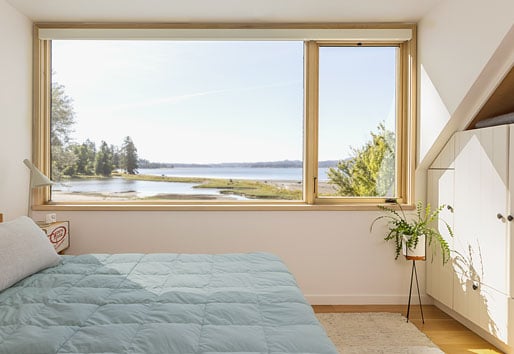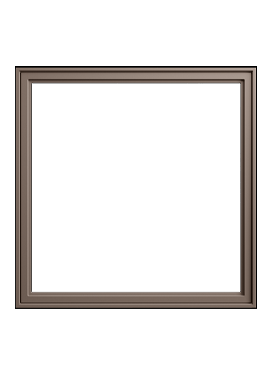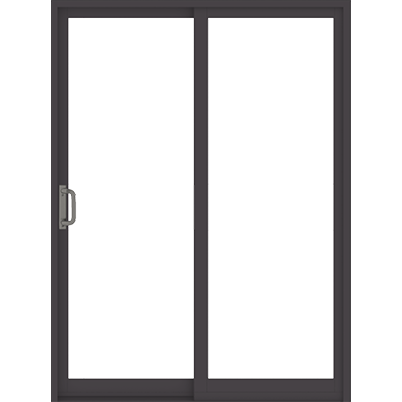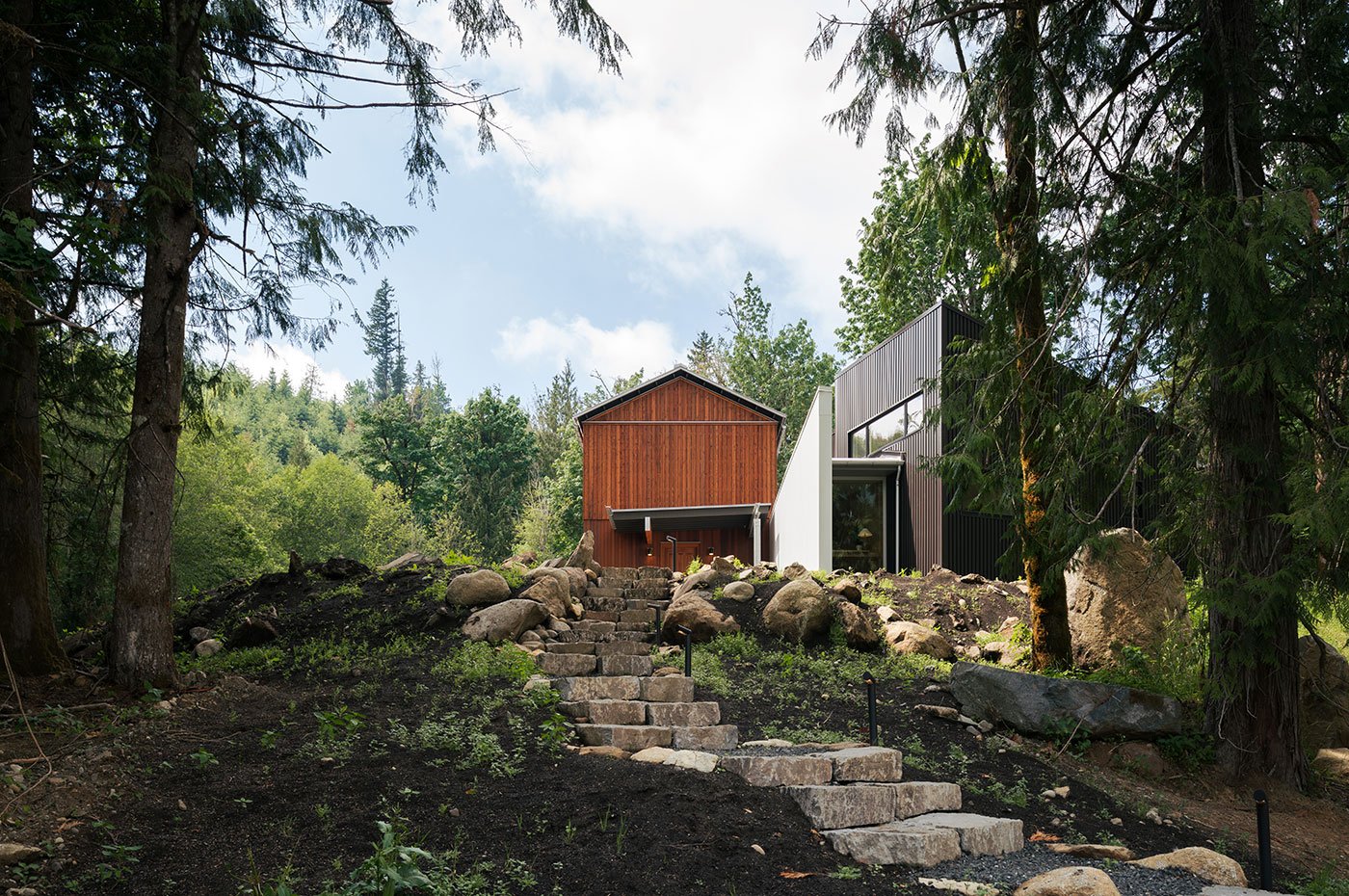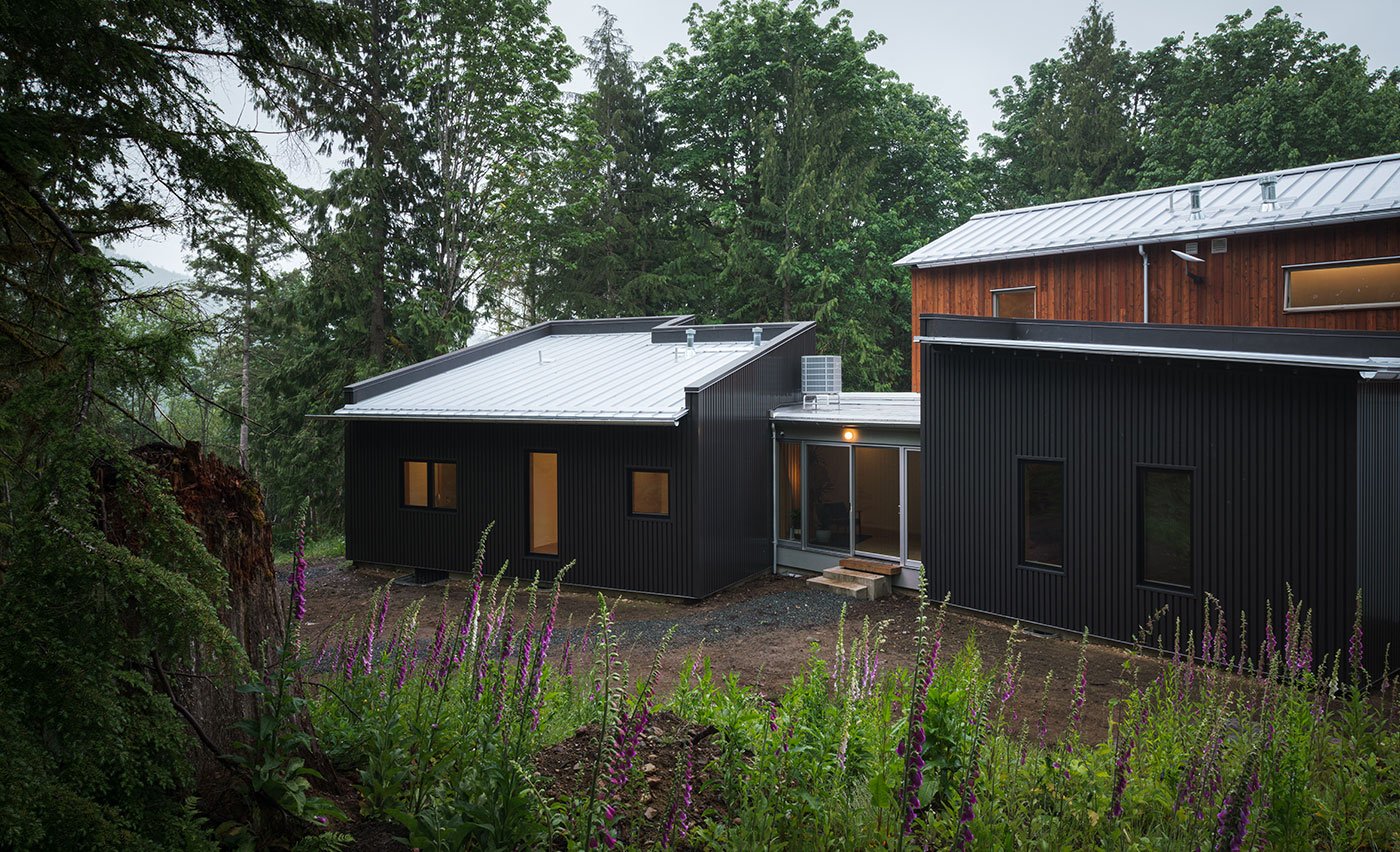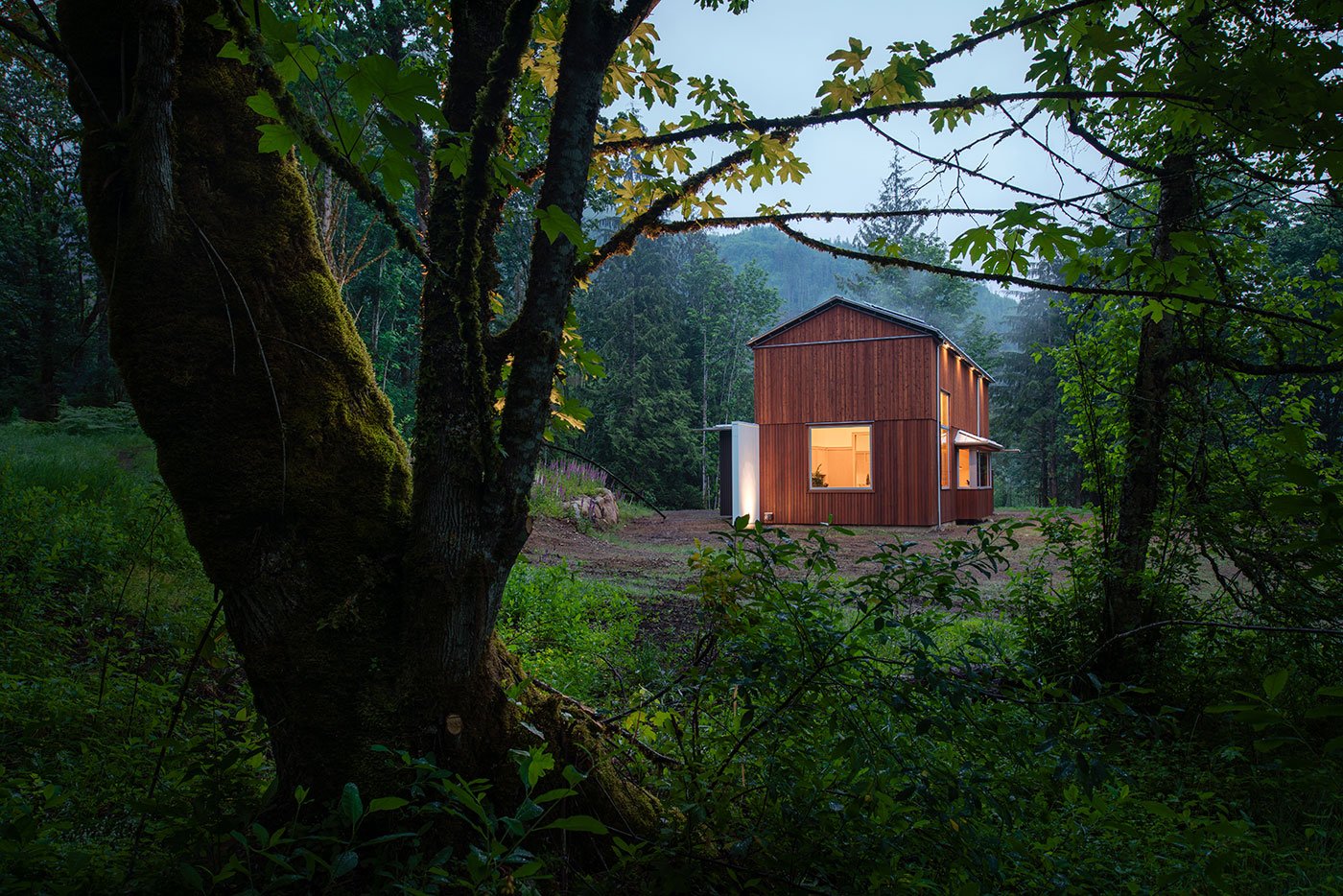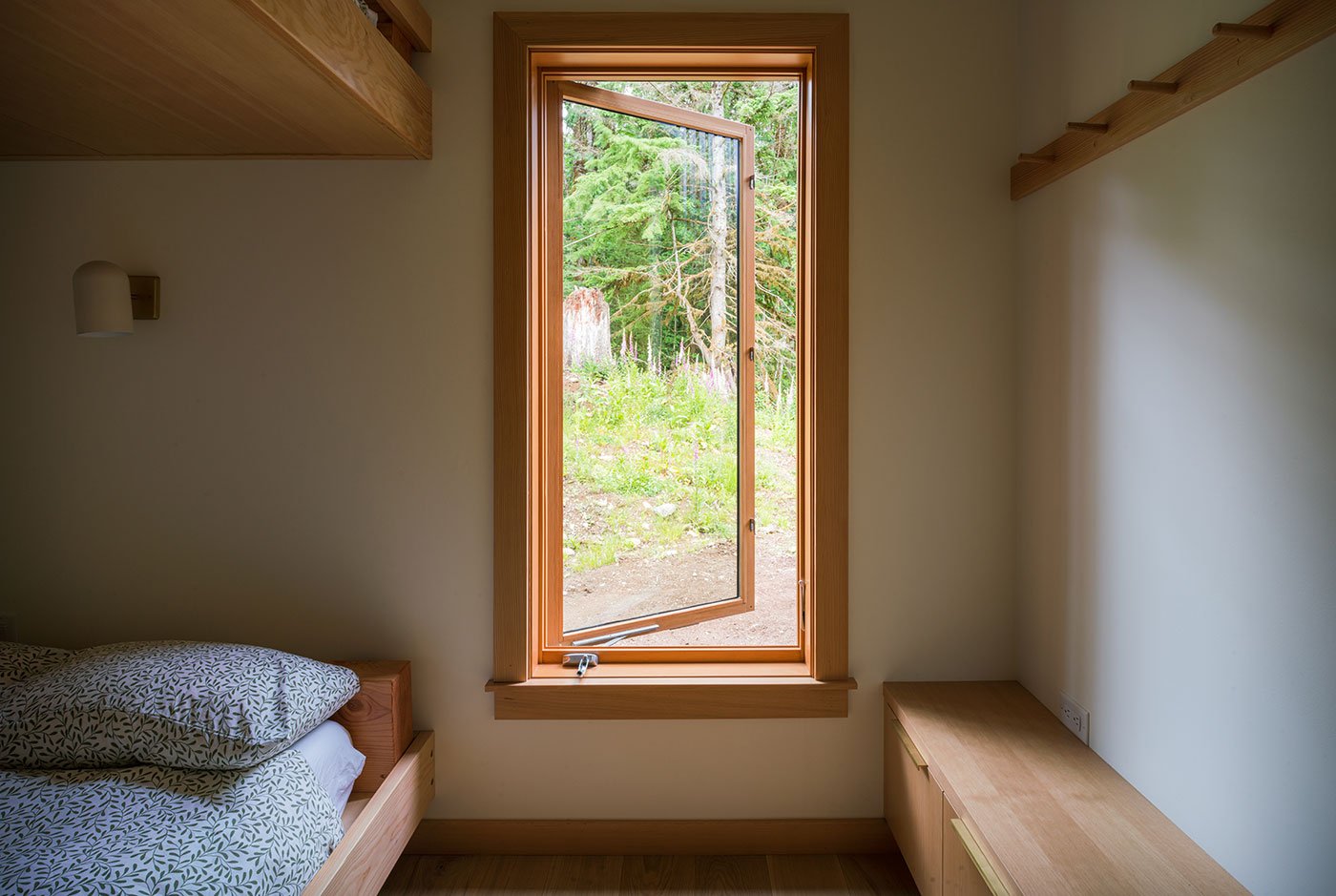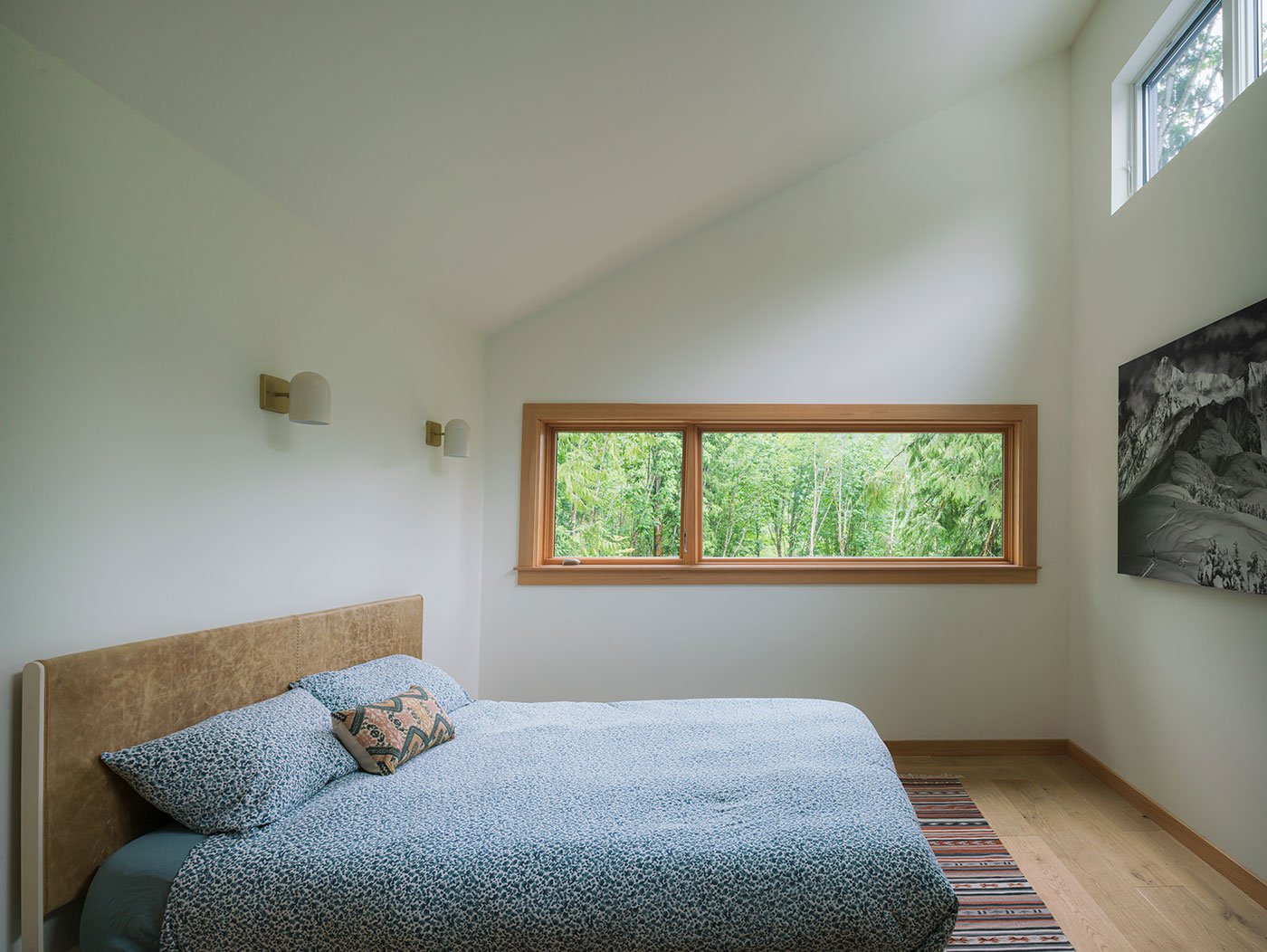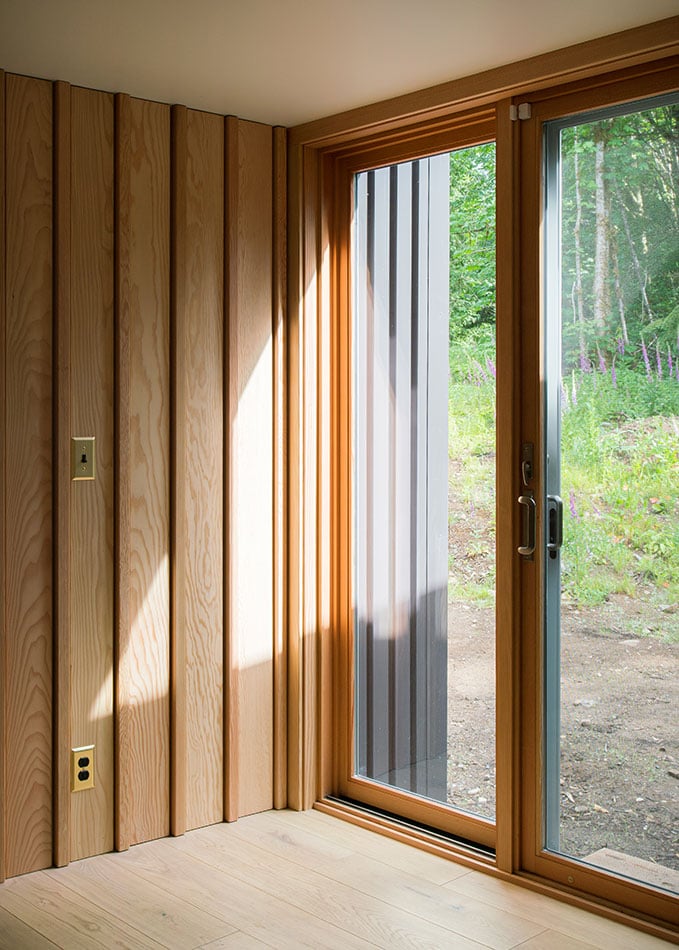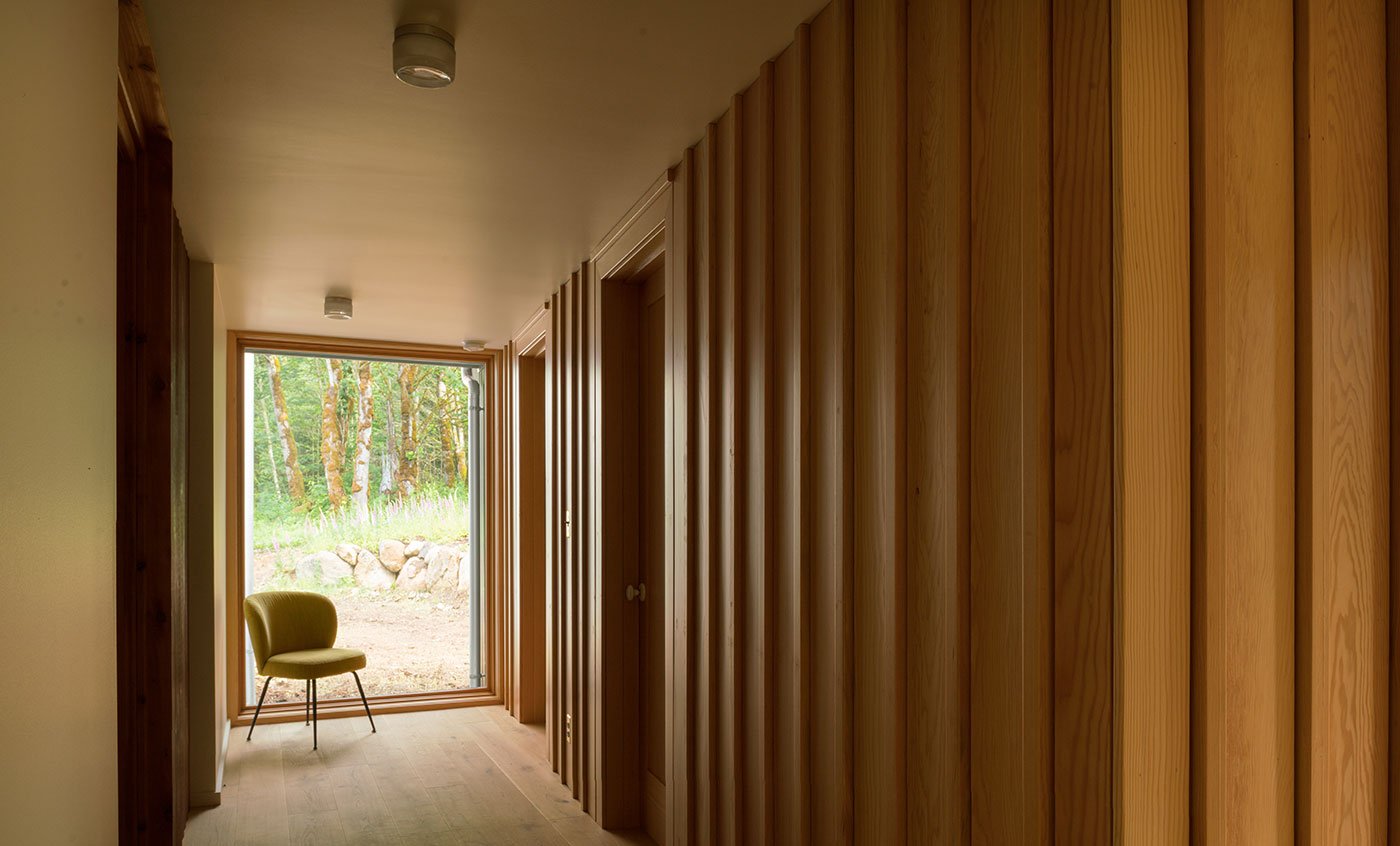Projects
A Pacific Northwest retreat that treads lightly on the land

Growing up in the Seattle area, Neal Andrew Barber, AIA, spent plenty of weekends exploring and recreating in the western Cascade Mountains on the border of Washington state and Canada, so it was only natural for him and his wife to gravitate toward this area when they decided to build a weekend home. When they stumbled upon a parcel with a meadow full of mature bigleaf maple trees, they knew they’d found their place. It stood out from its heavily forested surroundings, giving Barber an opportunity to test out stylistic ideas that had been floating around in his head since graduate school and to design a home that responds well to local conditions while meeting modern needs for sustainability.
Connecting with nature
Barber chose to site the home in a way that maximizes southern and southwestern light and vantages of the meadow and adjacent pond. Large E-Series windows take advantage of these unobstructed views, framing them like paintings. But it wasn’t just the views out that Barber considered. He also put great care into framing views of the home itself.
Neal Andrew Barber, AIA

“When people think of Pacific Northwest architecture, it’s more about blending in,” he said. “For this project, we wanted it to stand out in the landscape.” To achieve this, he carefully considered how the home would interact with the surrounding natural features — trees, pond, meadow, as well as the walking paths.
At the same time, he wanted to make sure the building looked like it had been there for a long time. Taking inspiration from the local vernacular, he modeled the home’s primary volume after a barn. Clad in vertical strips of cedar siding, it will develop a silvery patina as it ages — thus the home was dubbed the “Silver Residence.”
Lighting the interior
Borrowing the Pacific Northwest barn typology didn’t just lend stylistic benefits, it also helped inspire Barber’s creative daylighting solution. The structure’s height accommodates two tiers of windows. The windows closer to the ground primarily serve to frame the landscape while the windows higher up on the walls provide light. The walls, which are 14 to 18 feet tall in communal rooms like the kitchen and living room, have ceiling-height windows that are especially effective at bringing in light during the gray winters. And the white paint helps the light travel evenly throughout these rooms, creating a lightbox effect that cuts down on the amount of electric lighting needed during the day. In fact, the windows play an even larger role in the sustainability of the home.
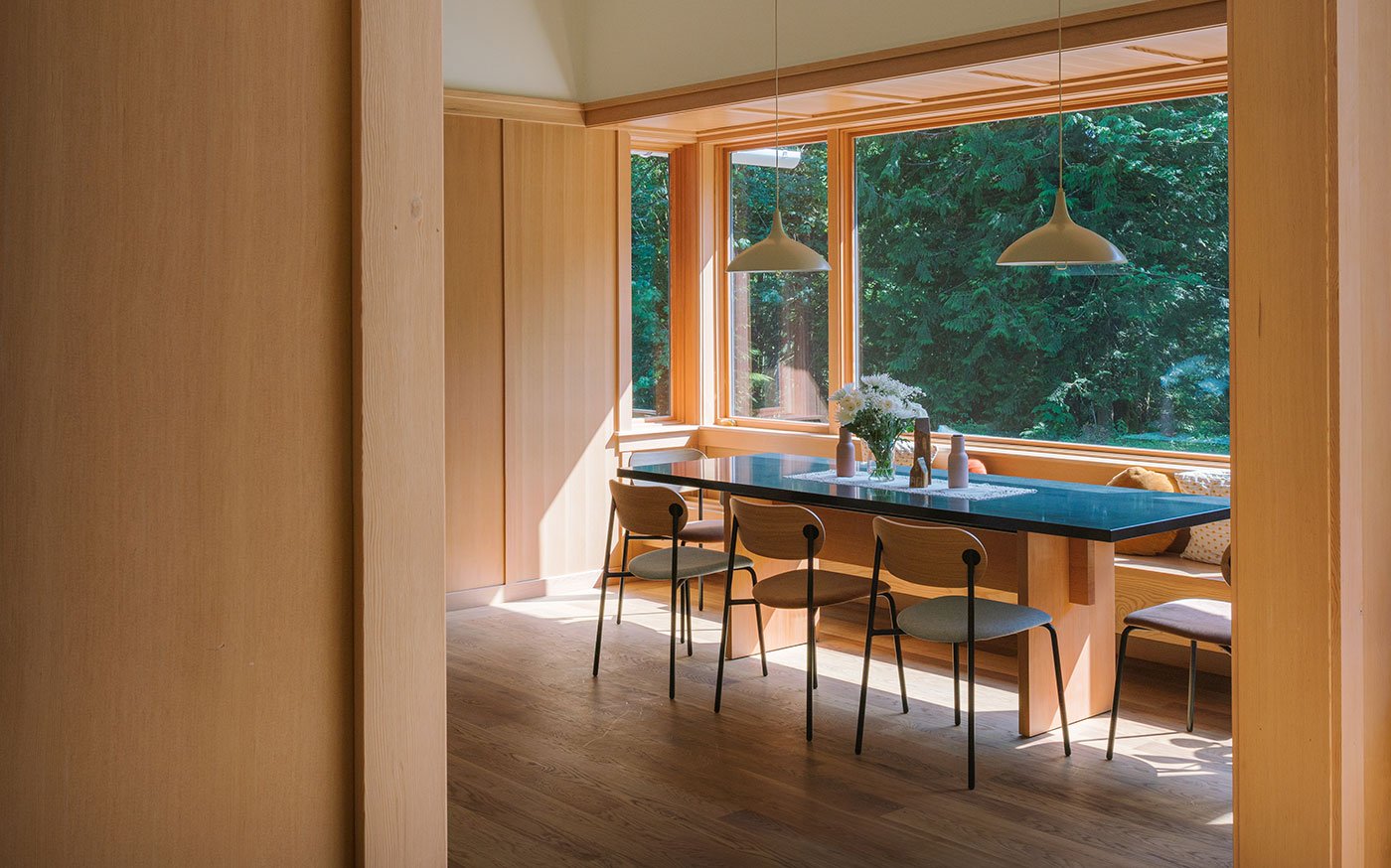
Integrating sustainability
A combination of strategies allows the home to support the family’s energy needs. There’s a small solar array on the roof that powers the all-electric utilities. The home is heated through sub-floor radiant heat and an air-to-water heat pump. Exterior insulation and dual-pane windows with low-emissivity coatings help insulate the home and reduce energy loss. Barber chose Low-E4® glass with HeatLock® technology. Low-E4 is a good option for most climates as it helps with year-round energy performance — keeping a home warm in winter and cool in summer. Pairing this coating with HeatLock technology, which is specifically made to keep heat from escaping homes in northern climates, further boosts the energy efficiency of his windows — learn more about our glass coating options.
Barber also used the windows to solve for summer cooling needs. “We don’t have crazy hot summers, but they can get hotter than people might realize,” he said. For this reason, he opted to use operable windows in highly placed spots. 400 Series Casement Windows allow hot air to circulate out while cool air filters in through the low-placed E-Series Casement Windows, creating a passive cooling system that helps keep the home comfortable.
Barber’s builder, Bellingham Bay Builders, was awarded a 2023 Zero Energy Ready Home – Housing Innovation Award by the U.S. Department of Energy for the Silver Residence. The home has a modeled HERS score of –1 and is ENERGY STAR® certified for Washington state.
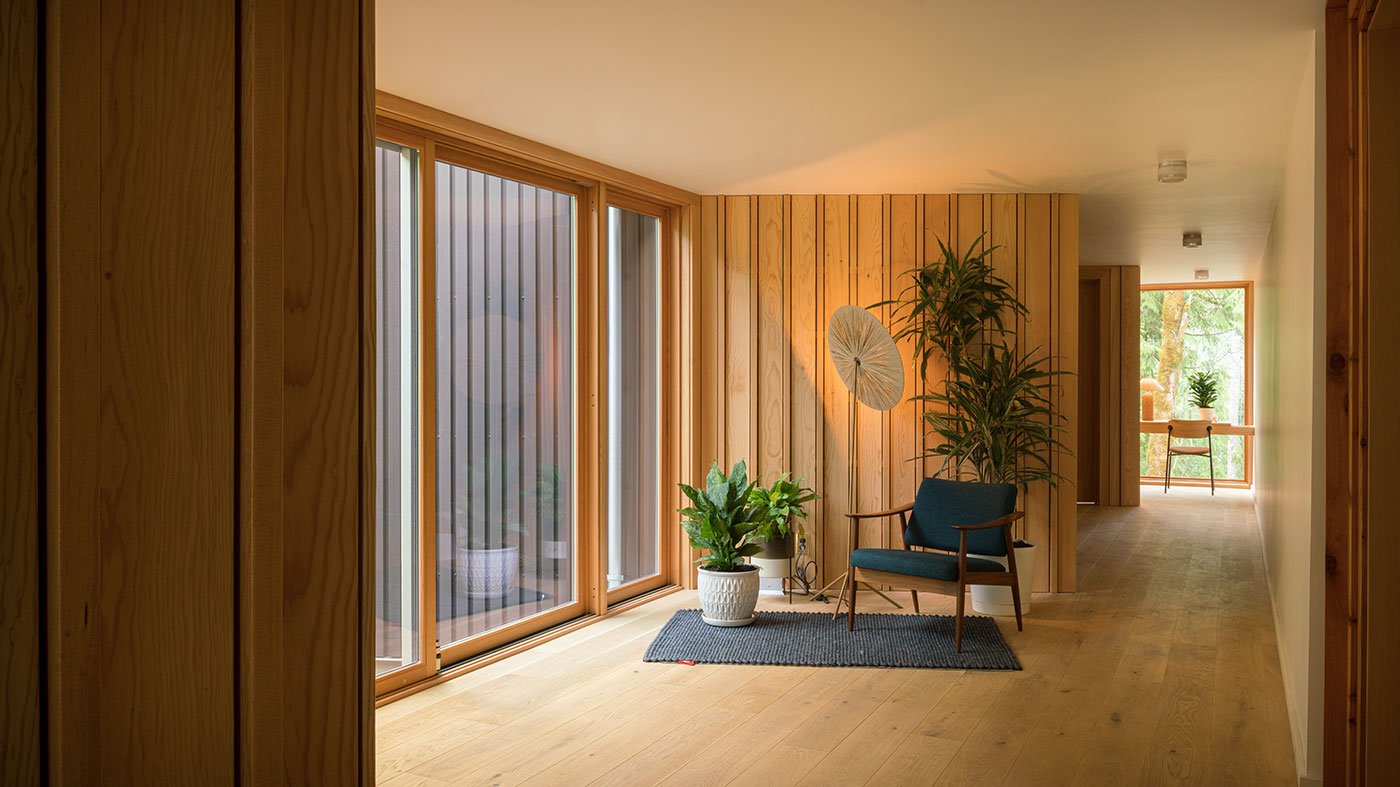
“This home was really a test case. The passive cooling and the daylighting scheme have worked out better than I had hoped,” Barber said. Just as satisfying for him is seeing the landscape, which attracted him in the first place, grow back green after the disruptions of construction.
Although a relatively modest 2,340 finished square feet, the home works hard — connecting the family to a special place in a way that’s beautiful and treads lightly on the earth. With such a fine balance of form and function, it’s no surprise this home was recognized as a 2023 winner through the Andersen Bright Ideas Contest in collaboration with Dwell magazine.
Meet Studio Nocturne
Studio Nocturne is a full-service architecture and design firm located in greater Seattle. It specializes in high-performance contemporary design informed by art, history, and the land. The firm's commitment to professionalism ensures that each project is executed with precision and care, resulting in lasting buildings that respect the past while moving forward.
Since its founding in 2021, Studio Nocturne has received recognition for its award-winning and expanding portfolio of residential and commercial projects. "We believe that great architecture is an expression of understanding," says firm founder and principal Neal Andrew Barber. "Understanding our client's needs, ideas, and dreams, as well as the constraints of site, material, and cost. Studio Nocturne does not design for the sake of novelty; we build for the way people live. Every space has a story, every form a reason."

More to explore

Pro-views
Low-E glass: what are the benefits & how to pick it out
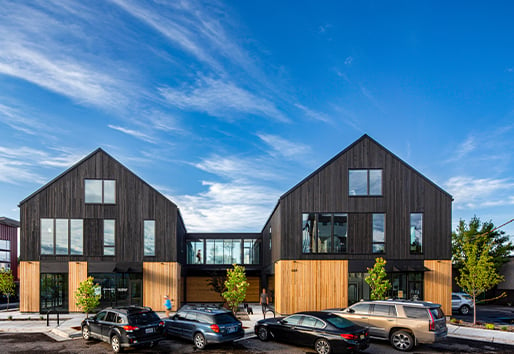
Pro-views
A mixed-use building that balances public and private life
